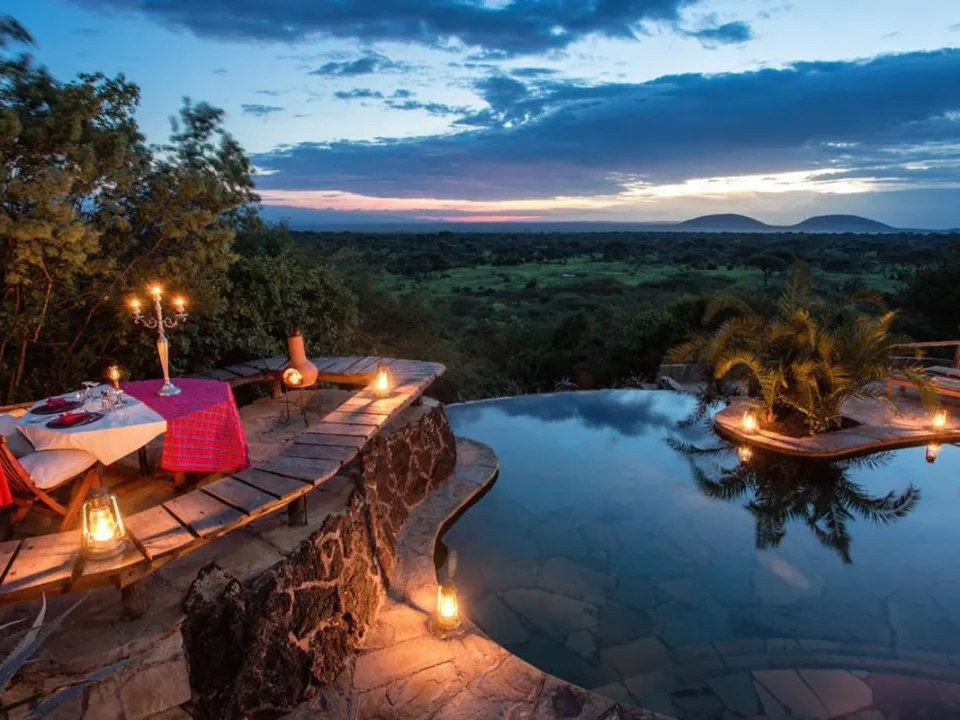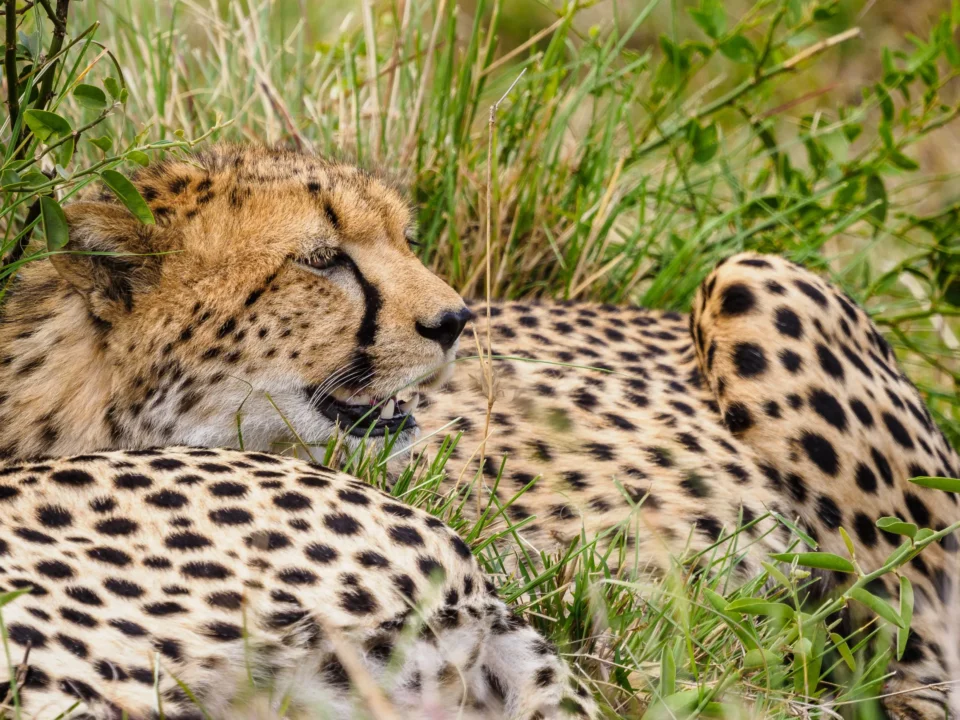- GET IN TOUCH WITH US:
- +256 753518160
- +256 777842166
- info@experiyatourcompany.com
Can I combine gorilla trekking with chimp tracking in Rwanda?
November 13, 2025
How does Rwanda use gorilla tourism to help conservation?
November 13, 2025How Close Can I Get to Mountain Gorillas?
Mountain gorilla trekking in Rwanda is one of the most awe-inspiring wildlife experiences on earth. Travellers who venture into the lush volcanic forests of Volcanoes National Park are rewarded with intimate encounters that feel almost unreal—watching a silverback calmly dominate his space, mothers gently cradling their infants, playful juveniles tumbling through vines, and entire families interacting with tenderness and power. But one question nearly every traveller asks before embarking on this life-changing journey is: How close can I get to mountain gorillas?
The answer is rooted in conservation, safety, and scientific understanding of gorilla behaviour. While the experience is deeply close and emotional, strict guidelines govern how near visitors may approach these endangered primates. This detailed guide explains the official rules, why the distance matters, what to expect when gorillas move closer on their own, and how to enjoy your encounter safely and respectfully.
The Official Viewing Distance: Seven Metres
The primary rule for gorilla trekking is that visitors must maintain a minimum distance of seven metres (about 21 feet) from the gorilla family. This is the official guideline implemented by the Rwanda Development Board and conservation experts to protect both travellers and gorillas.
This rule helps in several ways.
Firstly, it reduces the risk of transmitting human diseases to the gorillas. Mountain gorillas share about 98% of their DNA with humans, making them vulnerable to illnesses such as colds, flu, and respiratory infections. A safe distance limits exposure and protects gorilla families from dangerous outbreaks that could spread rapidly among them.
Secondly, maintaining distance ensures gorillas do not feel threatened or crowded. Even though habituated gorilla families are accustomed to human presence, they remain wild animals with natural boundaries. Approaching too closely could cause stress or provoke defensive behaviour, particularly from dominant silverbacks protecting their family.
Finally, distance preserves the integrity of the gorillas’ natural behaviour. Observing them from seven metres allows travellers to witness authentic interactions without interfering in their space or routines.
Why Seven Metres Matters for Conservation
The seven-metre rule is not arbitrary; it is backed by years of research and continuous conservation monitoring. Mountain gorillas in Rwanda, Uganda, and the DRC have shown remarkable resilience and population recovery thanks to strict protection and careful visitor management. Minimizing human-gorilla proximity is a cornerstone of this success.
Respiratory infections remain one of the most significant threats to habituated gorilla groups. Because gorillas and humans are so genetically similar, even a simple cold can be lethal to gorillas, especially infants and older individuals. By maintaining seven metres, travellers contribute directly to disease prevention and long-term conservation.
Additionally, keeping distance reduces stress. Gorillas are sensitive animals with complex emotional and social structures. Respecting their space helps keep them relaxed and comfortable throughout the one-hour viewing session.
Do Gorilla Encounters Feel Close Even With the Distance Rule?
Yes—they feel incredibly close. Even though trekkers are advised to maintain seven metres, the experience still feels intimate due to the unique nature of the environment and viewing conditions.
Mountain gorillas often remain in relatively small clearings or move slowly through bamboo forests, enabling clear and unobstructed viewing. Their expressive faces, gentle eyes, and deep vocalizations make the encounter feel emotionally close, even when maintaining the proper distance.
The quiet atmosphere of the forest heightens the experience. You will hear gorillas chew, grumble, groom each other, and communicate softly. The seven-metre distance does not diminish these moments; instead, it ensures the encounter remains safe and deeply respectful.
What Happens When Gorillas Move Closer to You?
Although trekkers must stay seven metres away from gorillas, gorillas do not follow this rule. They may approach you out of curiosity or pass by as they move through their habitat. Because they are habituated, they are comfortable around humans and sometimes come much closer than expected.
When this happens, the rule is simple: remain still, stay calm, and do not attempt to move closer or touch the gorilla.
Guides will quietly instruct the group on how to respond. It is important not to panic, make sudden movements, or pull away quickly. If a gorilla brushes past you—which sometimes happens with juveniles—stay relaxed with your hands down. Gorillas view sudden gestures as potentially threatening.
Even though gorillas may approach, travellers should never extend hands, attempt selfies at close range, or lean toward the animals. Respectful stillness ensures safety and preserves the gorillas’ trust.
Silverbacks and Personal Space
Silverback gorillas, as dominant leaders of their families, command respect simply through their presence. They may occasionally walk past a group or stop near a trekker while monitoring their family. These moments can feel intense, but guides are trained to read silverback behaviour and will position the group safely.
If a silverback approaches, the same rule applies: remain still, avoid direct eye contact, and let the gorilla move naturally. Never step into the path of a silverback or turn your back abruptly.
The presence of the guide and tracker team ensures trekkers are always safe, even when gorillas move closer unexpectedly.
Photography and Distance Rules
Photography is one of the highlights of gorilla trekking, but the seven-metre rule still applies. Travellers must not move closer for a better shot, even if lighting or composition changes. Guides often suggest suitable positions that honor the distance guidelines while allowing for excellent photos.
Flash photography is strictly prohibited. A flash can startle gorillas and disrupt their behaviour. Before the trek begins, double-check that your flash is turned off on all devices.
Even while photographing, keep your movements slow and controlled. Avoid kneeling suddenly or leaning forward too quickly, as these movements could confuse or alarm the gorillas.
Maintaining Distance in Dense Forests
In thick vegetation, maintaining seven metres can feel challenging. The forest grows tightly around the gorilla groups, and sometimes visibility is limited. In these cases, guides will position trekkers carefully to ensure safety. They may ask you to move quietly to a clearer area or adjust your stance so that vegetation does not force you too close.
Gorillas may also change positions during the viewing hour. If they move toward you, step back slowly if possible or remain still if backing away would disturb the group. Guides are always close by to assist with safe repositioning.
Why You Should Never Attempt to Touch a Gorilla
Even if a gorilla seems close, docile, or curious, touching them is strictly prohibited. Physical contact poses severe health risks to gorillas and can provoke defensive behaviour. Human skin can carry bacteria or viruses harmful to gorillas, and touching them creates a dangerous precedent that undermines the goal of habituation.
Remember: habituation is meant to make gorillas comfortable with human presence, not dependent or overly familiar. Respecting boundaries helps preserve their wild nature.
The One-Hour Viewing Limit and Why It Matters
In addition to the distance rule, trekkers spend a maximum of one hour with the gorilla family. This limit is enforced to reduce stress and minimize human impact. Even with the seven-metre distance, prolonged exposure can disrupt gorilla behaviour.
The one-hour session feels surprisingly long and immensely fulfilling. During this time, you may observe feeding, grooming, nursing, chest-beating displays, playful interactions, and various social behaviours. The brief but intense nature of the encounter makes it one of the most memorable moments in nature.
Conservation Ethics: Respect Enhances the Experience
Keeping distance is not a limitation—it is a gesture of respect that deepens the emotional value of the encounter. When travellers uphold distance guidelines, gorillas remain calm, families behave naturally, and conservation ethics are strengthened. Responsible tourism has played a significant role in the increase of mountain gorilla populations over the past decades, making respectful distance essential to ongoing protection efforts.
How Close Can You Get?
Officially, you may be as close as seven metres away. Unofficially, gorillas may choose to come closer on their own. The encounter is incredibly intimate but always governed by respect, calmness, and conservation principles. Maintaining distance protects gorillas from disease, keeps trekkers safe, and preserves one of the world’s most precious wildlife experiences in its purest form.
If you are planning to witness these extraordinary creatures up close and want a seamless, ethical, and well-organized safari experience, consider booking your gorilla trekking journey with Experiya Tour Company. Their expert guides, thoughtful planning, and deep knowledge of Rwanda ensure that your encounter with mountain gorillas is both unforgettable and responsibly managed.




